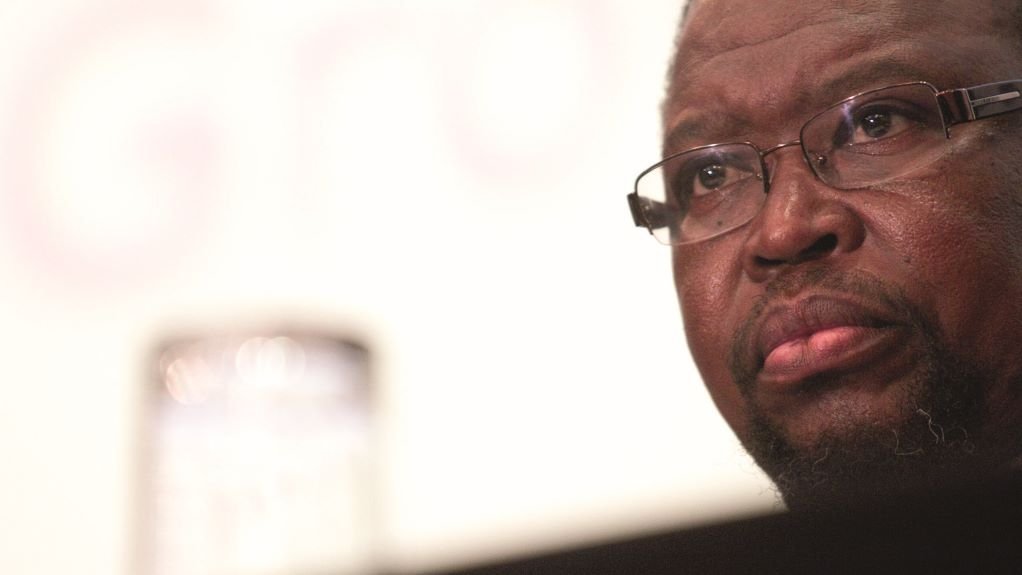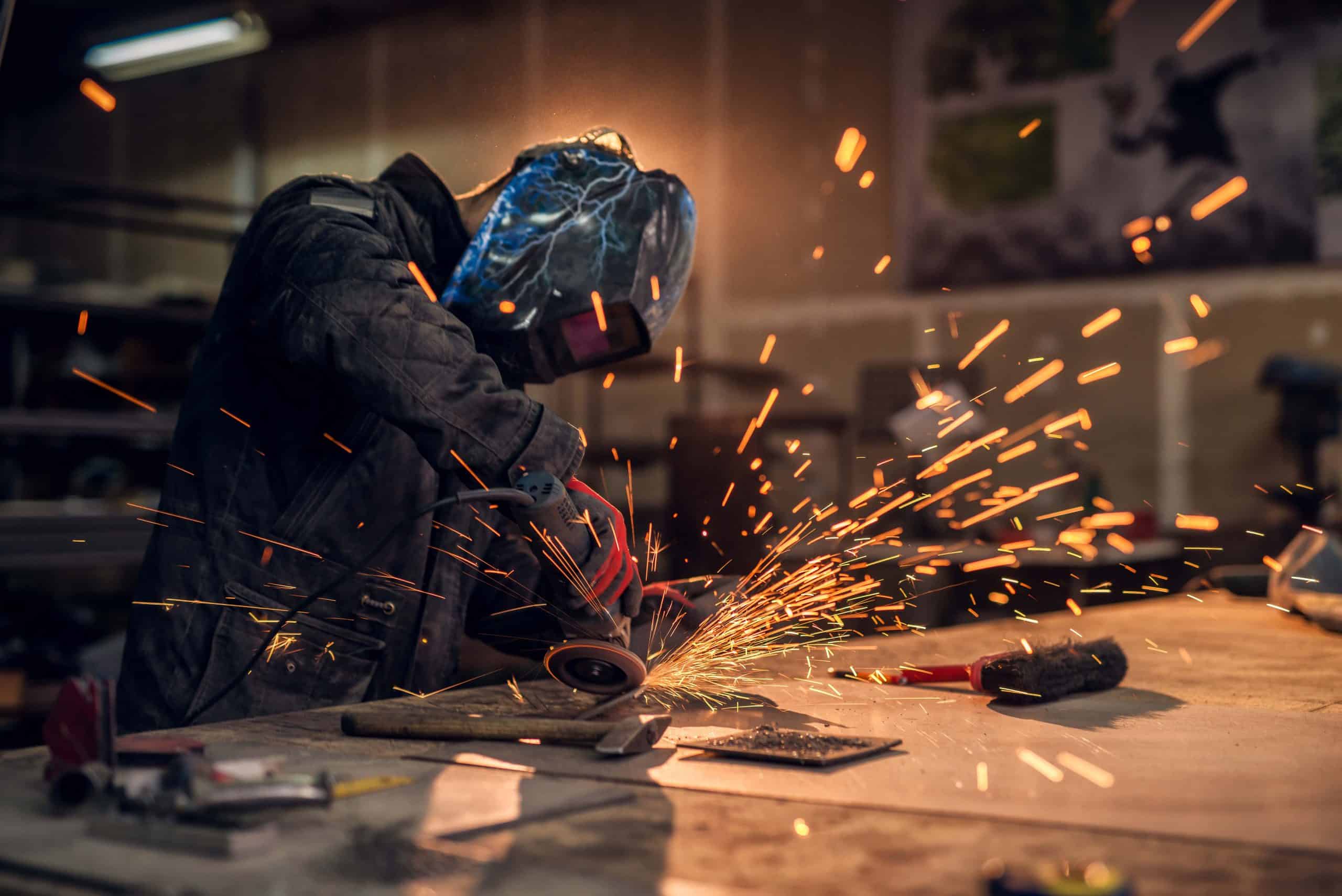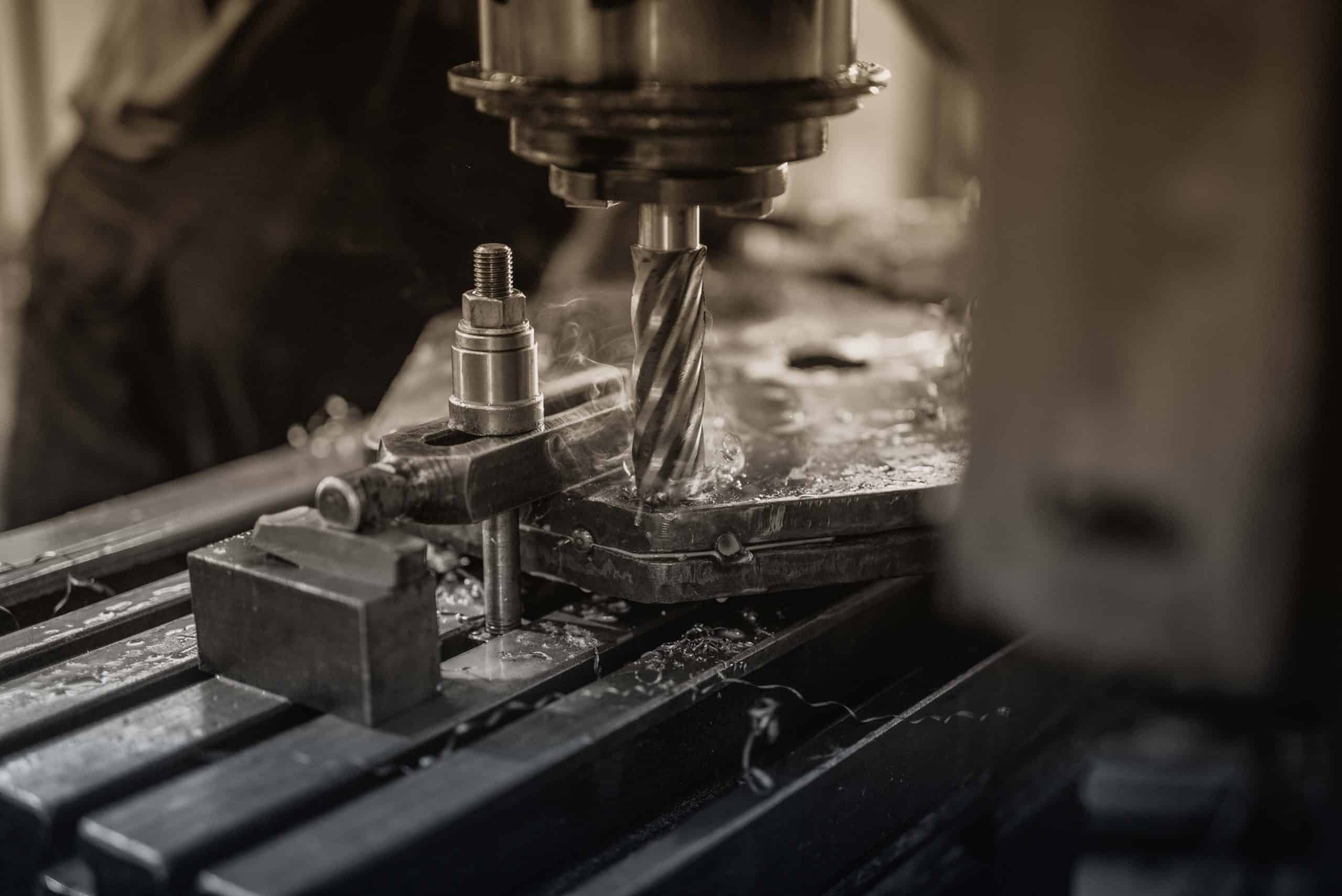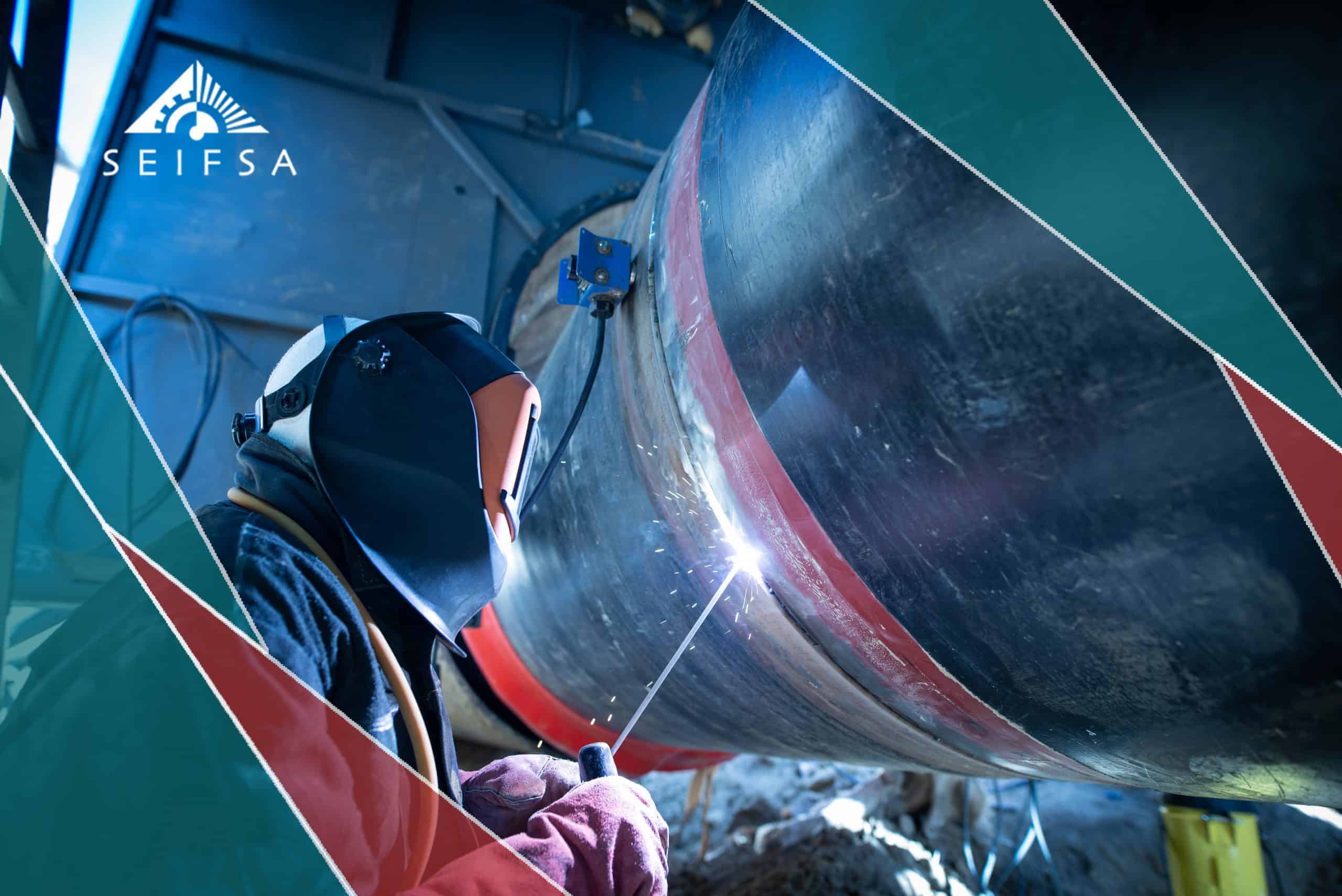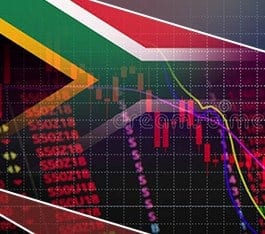SEIFSA welcomes cabinet reshuffle and looks forward to working with the new Minister of Finance
JOHANNESBURG, 6 August 2021 – The Steel and Engineering Industries Federation of Southern Africa (SEIFSA) welcomes the cabinet reshuffle and is looking for forward to working with new Minister of Finance, Mr Enoch Godongwana.
The departure of outgoing finance minister Tito Mboweni is disappointing, considering the level of experience, expertise and political background. However, SEIFSA acknowledges that it was his own personal wish to vacate the office after bringing stability to the Treasury Department during these challenging times. SEIFSA applauds his efforts and contribution to strengthening South Africa’s fiscal position.
SEIFSA also welcomes President Cyril Ramaphosa’s the decision to pull the security cluster into his control, especially following last month’s violent unrest that led to the disruption of businesses and manufacturing activity. The Absa Purchasing Managers’ Index came in at 43.5, clearly demonstrating the massive level of disruption in the supply chain caused by the inability to deliver much-needed raw materials to industries and other customers of final manufactured goods.
Commenting on Mr Godongwana’s appointment, SEIFSA Chief Economist Chifipa Mhango said his background in Government administration and his role as part of the African National Congress’s Economic Transformation Committee, coupled with his education background in economics, makes him a suitable candidate for the finance portfolio. “We are confident that he will continue following the prudent direction set by Mr Mboweni,” he said.
“SEIFSA looks forward to the continued drive towards infrastructure investment in the economy, as when measured in terms of fixed investment levels to GDP, it is still below par when compared to other emerging economies. We hope under Mr Godongwana, there will be real efforts made to ramp up investment,” he said, adding that there also needs to be more focus on the implementation of policies that will support the manufacturing sector and drive job creation, considering the massive unemployment rate in South Africa.
“We wish President Ramaphosa well with his new Cabinet and look forward to continuing our robust engagements with the relevant departments as we work towards a common vision to rebuild our economy.”
Ends
SEIFSA welcomes uptick in capacity utilisation in the manufacturing sector
JOHANNESBURG, 05August 2021 – The improvement in manufacturing sector capacity utilisation even as South African remains under lockdown is encouraging, the Steel and Engineering Industries Federation of Southern Africa (SEIFSA) said today.
Data released by Statistics South Africa (Stats SA) today shows total capacity utilisation was 78.6% in the second quarter of 2021 compared with 59.8% in second quarter of 2020, thus representing an increase of 18.8%. Within the Metals and Engineering (M&E) sector, capacity utilisation significantly improved to 77.1% in the second quarter of 2021, from 52,9% in second quarter of 2020.
All the manufacturing divisions showed increases in utilisation of production capacity in May 2021 compared with May 2020. Within the M&E sector, motor vehicles, parts and accessories and other transport equipment recorded utilisation of production capacity above 80% in the second quarter of 2021.
SEIFSA Chief Economist Chifipa Mhango said this is welcomed news as it demonstrates that if lockdown regulations are further eased as the vaccine roll-out ramps up, production levels can increase under improved demand conditions.
In recent months, the manufacturing sector has also showed signs of improvement in terms of production patterns with year-to-date production improvement of 17.1 % to May 2021.
“Though there are improvements in total capacity utilisation, we are still operating at a level lower than 80% benchmark. Increased levels of industrial domestic demand are required for manufacturers to fully reboot capacity utilisation levels,” Mr Mhango said.
He said for production and capacity utilisation patterns to significantly improve, the Government needs to support the ailing manufacturing economy through effective implementation of the policy solutions as identified in the Steel and Metal Beneficiation Master Plan. “This is key if the M&E sector is to reverse the current decline in levels of employment and investment, while strengthening our trade position with the rest of the world,” he concluded.
Ends
Producer prices continue to rise amid input cost increase for industries, says SEIFSA
JOHANNESBURG, 29 JULY 2021 – The rise in producer price inflation (PPI) does not bode well for the overall domestic inflation outlook as producers pass on costs to consumers, who are already under financial strain, the Steel and Engineering Industries Federation of Southern Africa (SEIFSA) said today. Data released today by Statistics SA showed PPI for final manufactured goods rose to 7.7% in June from 7.4% in May 2021.
Metal products, food products and computing equipment were among the largest contributors to the increase. Prices for intermediate manufactured goods increased to their highest level this year at 16.4% in June. This is the category within which most Metals and Engineering sector products fall. The mining sector remains a key raw material supplier to the M&E sector and mining PPI highlights the input costs pressures facing the sector. PPI in mining remains above 20% level from the May 2021 movement, averaging 17% in the six months to June.
SEIFSA Chief Economist Chifipa Mhango said rising PPI remains a concern for the M&E sector and as long as producers pass on cost increases to consumers, margins will remain tight. “While PPI could easily translate into increased revenue due to higher prices, in a depressed market it is more likely to lead to smaller sales volumes
as financially strained consumers prioritise food and transport over goods such as household appliances,” Mr Mhango said. Mr Mhango noted that while it is encouraging that consumer inflation remains within the monetary policy target range of 3% to 6%, having come in at 4.9% in June 2021, after a slight decrease from 5.2% in May, the cost of living continues to rise as a result of higher food and transport costs.
Globally, PPI is also trending upwards as projected by SEIFSA. Global PPI has picked up to levels averaging above 5% amid resurgent global demand and supply constraints.
SEIFSA disappointed at Numsa decision to register a deadlock at Metals and Engineering industry wage talks
JOHANNESBURG, 28 JULY 2021 – The decision by the National Union of Metalworkers of South Africa to register a deadlock in response to the Steel and Engineering Industries Federation of Southern Africa’s (SEIFSA’s) conditional wage offer is disappointing given the challenges faced by the Metals and Engineering (M&E) industry, SEIFSA Operations Director Lucio Trentini said today.
SEIFSA, which represents 18 affiliated employer organizations at the Metal and Engineering Industries Bargaining Council, had on 23 July offered a 4.4% (April CPI) increase calculated on the scheduled rates across the board for year one, CPI plus 0,5% in year two and CPI plus 1% in year three. The offer also included a special phase-in
dispensation aimed at encouraging small and medium-sized employers who over the last 10 years have elected not to be covered by the main agreement to come on board and participate on a 15-year phase-in dispensation aimed at achieving parity with the main agreement rates while continuing to enjoy the remaining benefits associated with the agreement.
Mr Trentini said SEIFSA’s offer is aimed at the survival, recovery, and growth of the M&E sector, which has been under strain for several years and now faces additional challenges included the COVID-19 pandemic and the recent unrest that took place in KwaZulu-Natal and parts of Gauteng. Mr. Trentini said South Africa is still counting the costs of the looting and destruction that took place, but already initial estimates put the dame at 0.4%-0.85 of GDP, equating to about R50-billion.
“On the back of what unfolded over the last two weeks, business confidence generally took a huge knock and it is expected that investors and business owners will be even more reluctant to reinvest in the sector,” he said, adding that the instigators and participants of the looting two weeks ago have set the industry back in dealing with the survival and recovery of the sector. “There will be job losses adding to those already lost from the pandemic and unemployment will once again soar in the months to come,” he said.
He said while some businesses may have the balance sheets to rebuild their factories, small businesses and manufacturers that are job-centered will struggle to get back on their feet and some may never reopen.
“Outside of KZN and Gauteng, factories across the industry have been significantly affected by supply chains, logistics, rail, and port disruptions, and the knock-on effects will be felt across the sector for quite some time and continue to negatively impact business confidence,” he said.
Mr. Trentini said he remains hopeful that the employers and trade unions will be able to find common ground in reaching an agreement that places the best interests of the industry at its heart. He said he is encouraged that the trade unions, which also include Solidarity, Uasa, the Metal and Electrical Workers’ Union of South Africa, and the South African Equity Workers Association, have indicated their willingness and availability to continue negotiations with a view of finding common ground.
The SEIFSA and RMA Supplier Development Programme
Your Opportunity to Lend a Helping Hand to a Fledgling Business – At No Cost to You or Your Supplier
The Steel and Engineering Industries Federation of Southern Africa (SEIFSA) and Rand Mutual Assurance (RMA) are pleased to announce the launch of an Enterprise Supplier Development Programme aimed at supporting and mentoring black-owned (and preferably black female-owned) SMMEs.
We invite you, as a company operating within the Metals and Engineering Sector, to join us in this exciting journey to support small businesses within our sector by nominating SMMEs already in your value chain to participate in this programme.
SEIFSA will work with the SMME, perform a needs analysis and roll out all the necessary services, interventions and/or training that may be required to move the SMME from good to great.
Through this initiative and assistance, our aim is to turn these emerging enterprises into profitable and reliable businesses with the potential to scale up their offerings to you.
To raise their profiles within our sector, SEIFSA intends to showcase theses success stories at the prestigious Annual SEIFSA Awards for Excellence Gala Dinner on 20 May 2021.
For more information or to nominate an SMME that you may already be doing business with, please contact Nuraan@seifsa.co.za
This is your opportunity to lend a helping hand to a fledgling business – at no cost to you or your supplier.
The closing deadline to nominate a SMME already on your value chain is Friday, 12 March 2021.
Trade, Industry and Competition Minister to Deliver Opening Address at BRICS Manufacturing Conference
JOHANNESBURG, 5 MARCH 2021 –Trade, Industry and Competition Minister Ebrahim Patel will deliver the opening address at the inaugural BRICS Manufacturing Conference, taking place on 26 March 2021 at the IDC Conference Centre in Sandton.
Hosted by the BRICS Manufacturing Working Group (MWG), the one-day conference aims to assist South African manufacturers to identify opportunities to take advantage of the country’s relations with its BRICS counterparts.
BRICS MWG Chairman Kaizer Nyatsumba said the conference is an important platform to bring together the Government, business, think-tanks and other interested stakeholders to engage on how to revive the manufacturing industry through strengthening trade relations between South Africa and its BRICS counterparts, Brazil, Russia, India and China.
“Engagements and collaborations at this high level should be spearheaded by the leadership of these the different stakeholders, hence we are pleased to be able to count Minister Patel among our speakers,” Mr Nyatsumba said.
He said the participation of Minister Patel, along with other Government leaders, captains of industry and academics, is an acknowledgement of the importance of leadership direction in helping South African manufacturers to understand the trading and policy environment of BRICS countries, given the need to find outside markets as South Africa struggles to recover economically.
The Chairperson of the South African chapter of the BRICS Business Council, Busi Mabuza, will also be at the conference, where she will introduce the BRICS Business Council. Ms Mabuza is currently also the Chairperson of the Board of the Industrial Development Corporation, which is the headline sponsor of the BRICS Manufacturing Conference.
Mr Nyatsumba said it is imperative for South Africa to lead by example and heed President Cyril Ramaphosa’s call to strengthen trade and investment ties with BRICS nations. Speaking at last year’s BRICS summit, President Ramaphosa said the BRICS countries needed to strengthen investment and trade ties in order to recover from the COVID-19 pandemic, and encouraged the countries to increase investment in Africa, particularly in manufacturing.
“Our role in paving the way for such investment is to ensure that we provide the local industry with the knowledge and expertise needed to trade with our BRICS partners, while also showcasing the opportunities that exist for such trade,” he said.
Ends
Communications Manager
Tel: (011) 298 9411 / 082 602 1725
Email: mpho@seifsa.co.za
Web: www.seifsa.co.za
Year-Long View of the Metals and Engineering Sector Concludes That Government Policy Support Is Essential To Revive the Sector
JOHANNESBURG, 25 FEBRUARY 2021 – The Steel and Engineering Industries Federation of Southern Africa (SEIFSA) today released its flagship publication, The State of the Metals and Engineering Sector Report 2020-2022.
Compiled by SEIFSA’s Economic and Commercial Division, the report is a comprehensive review of the Metals and Engineering (M&E) sector over the past year, taking into account local and external economic variables.
SEIFSA Chief Economist Chifipa Mhango, who led the compilation of the report, revealed that the sector faced significant obstacles over the past year, some of which have plagued the industry prior to 2020, such as rising energy costs, unreliable energy supply, rising logistical costs, limited raw material supply, exchange rate volatility, capacity under-utilisation, subdued demand, declining net operating surplus and rising imports.
However, the report findings show that the COVID-19 pandemic and lockdown measures implemented by the Government negatively impacted manufacturing activity and the broader M&E industries.
“The impact of lockdown measures led to a decline in the production of products such as steel, one of the key sub-sectors within the M&E sector, as well as a significant drop in its trade. Global commodity prices are influenced by production in this sector and lockdown measures significantly affected the prices, which dropped to their lowest levels in April last year,” Mr Mhango said.
The report shows that production levels in the M&E sector fell to their lowest levels in April 2020, dropping 70,7% year on year due to the lockdown restriction measures that were implemented in March 2020. The sector was 13.6% weaker in 2020 when compared to 2019, with the basic iron and steel sub-sector being the hardest hit, being -23.4% weaker in production than in 2019.
Production sales also dropped to their lowest level, falling 69.3% year on year in April 2020. M&E sector production sales were 12.3% weaker in 2020 when compared to 2019, with the basic iron and steel sub-sector being the hardest hit, at 20.5% weaker in production sales than in 2019.
Capacity utilisation (CU) was also impacted by lockdown restrictions, with total manufacturing CU dipping to 59.8% in the second quarter of 2020. Within the M&E sector, CU was at 52.8%. However, as lockdown restrictions were eased, there was an uptick, with total manufacturing utilisation increasing to 72.9% in the third quarter of 2020 and 66% in the M&E sector. In 2020 CU was 72.3% for manufacturing and 67.6% for the M&E sector.
With borders closed as part of measures to stop the spread of the Coronavirus, trade in South Africa was brought to a screeching halt. In the M&E sector, both import and export values dropped between the first and second quarters, with imports dropping from R134-billion to R105-billion and exports dropping from R92-billion to R59-billion.
According to the report, employment in the overall manufacturing sector remained on a downward trend, with the M&E sector shedding 25 857 jobs during the lockdown period.
However, the report also shows that the easing of restrictions led to a revival of industrial activity. “The revival of industrial activity thus led to an uptick in the global Purchasing Manager’s Index (PMI), which rose to levels above 50 in the later months of the year, a reflection of expansion of industrial activity in the manufacturing sector,” he said.
The third and fourth quarters of 2020 saw a rise in demand for construction and building material sales from a low level of R1.9-billion in April 2020 to a high of R12-billion in November 2020, he said.
“Business confidence also picked up to an index measure of 40 in the third quarter of 2020. However, the M&E sector was under pressure in 2020. Production remained weak throughout the year due to the impact of COVID-19 lockdown regulations, with a total production decline of -15.3% year on year. Production sales were also affected by the restrictions as demand from key market segments declined. Total sales to November 2020 amounted to R668-billion, which fell 13.4% year on year,” he said.
Still, the report paints a worrying picture for companies in the M&E sector, with decreasing price patterns in intermediate manufactured goods PPI since 2016. It shows that high electricity prices have compounded the existing gap between the selling prices for M&E intermediate goods and production. Of concern, as noted in the report, is the massive surge in prices of mining input products to 32.5% in 2020, which is higher than the price increases of intermediate manufactured goods, raising questions over the sustainability of the M&E sector.
As outlined in the report, the M&E sector is facing several pressures which have resulted in poor performance, according to most indicators.
“It is, therefore, critical that the Government supports the recovery of the sector through sustainable policy interventions, including the speedy implementation of the Steel Master Plan and other supportive measures,” Mr Mhango said.
Mr Mhango said there is reason to remain hopeful of recovery given some commitments made by the Government: ““In Thursday’s budget speech, Finance Minister Tito Mboweni said the Government has allocated R791.2-billion for public infrastructure spending, which will boost the M&E sector. The plans for the rolling out of COVID-19 vaccines as well as other investment incentives for the manufacturing sector also provide a platform to bring business confidence back to much higher levels to return industrial activity to full production.”
Concluding the report, Mr Mhango said SEIFSA envisages projected growth of 0.8% for M&E sector production in 2021 and 0.9% for total manufacturing..
Ends
Issued by:
Mpho Lukoto
Communications Manager
Tel: (011) 298 9411 / 082 602 1725
Email: mpho@seifsa.co.za
Web: www.seifsa.co.za
National Budget Adopts Correct Approach in Covid-19-Induced Tough Economic Times, Says SEIFSA
JOHANNESBURG, 25 FEBRUARY 2021 – The Steel and Engineering Industries Federation of Southern African (SEIFSA) welcomes the national budget presented by Finance Minister Tito Mboweni in Parliament yesterday.
SEIFSA Chief Economist Chifipa Mhango said it is clear the Government is trying to prioritise support for a rapid return to economic growth amid the COVID-19 pandemic and the associated national lockdown.
He welcomed the attention given to the COVID-19 vaccination programme as it is the only way to build sufficient business confidence that will allow production operations to resume at full capacity, noting that capacity utilisation within the M&E sector is currently around 68%.
Mr Mhango said Government’s commitment to support economic recovery by extending short-term economic support and undertaking reforms to lower the cost of doing business and stabilise public finances is encouraging, as is the move to lower corporate income tax to 27%.
SEIFSA is also encouraged by plans to foster growth by stabilising electricity supply, supporting industries with high employment, as well as potential and undertaking partnerships with the private sector: “Energy supply is one of the critical areas of concern for the M&E sector; addressing this challenge will go a long way towards benefiting the sector to ensure that there are no disruptions in supply,” Mr Mhango said.
Mr Mhango said the projected real economic growth rate of 3.3% in 2021 is too weak to provide a massive platform for higher demand for M&E sector products such as steel. He said a sustained economic growth rate above 5%, supported by growth rates of above 10% in the construction sector, is ideal. He advised producer companies to consider expanding their footprints beyond South Africa and take advantage of the African Continent Free Trade Area agreement.
Mr Mhango said he is encouraged that the Government has acknowledged the need to raise the level of fixed investment through infrastructure spending, considering the low levels of fixed investment to GDP of below 20%: “The Government is on the right track when it says that to grow the economy and reduce unemployment - and poverty, capital investment by the public and private sectors needs to increase.” He said between 2007 and 2009, public and private capital investment as a percentage of GDP had increased in response to various construction projects ahead of the 2010 FIFA World Cup, but has declined sharply since then, averaging 6.6% of GDP between 2010 and 2019.
He said the continued emphasis on infrastructure spending bodes well for the M&E sector and should stimulate demand. He added that, with State-owned companies projected to spend R293.7-billion over the next three years, it is important that companies in the M&E sector explore areas of opportunities to supply construction-related material for these Government projects.
Mr Mhango also welcomed the Government’s plans to boost local manufacturing production through various incentives to be provided through the Department of Trade, Industry and Competition, saying such efforts are likely to revive the economy and ease some of the pain experienced by the sector.
“The M&E sector should also take advantage of the reduced pressure on costs through the reduction of corporate tax by, among other things, focusing on improving competitiveness and efficiency of the production base by investing into new technologies. The COVID-19 lockdown measures that caused disruptions on production should be a lesson to speed up the fourth industrial revolution by advancing technology in production,” he said.
However, Mr Mhango expressed disappointment that there are still no concrete details around addressing logistical costs and rising energy costs, which are eroding the competitiveness of local producers in the M&E sector.
ENDS
Issued by:
Mpho Lukoto
Communications Manager
Tel: (011) 298 9411 / 082 602 1725
Email: mpho@seifsa.co.za
Web: www.seifsa.co.za
Rising Unemployment Numbers Reflect Hard Task Ahead For Government In Addressing Inequality And Poverty, says SEIFSA
JOHANNESBURG, 23 FEBRUARY 2021 – The quarterly labour force survey (QLFS) data released by Statistics South Africa (StatsSA) today reflects the challenge faced by the Government in dealing with inequality and poverty as the impact of COVID-19 deepens across the major economic sectors, the Steel and Engineering Industries Federation of Southern African (SEIFSA) said today.
According to StatsSA, South Africa’s unemployment rate rose to 32.5% in the fourth quarter of 2020, from 30.8% in the previous period. This is the highest jobless rate since quarterly data became available in 2008, amid the ongoing lockdown aimed at fighting the spread of the pandemic, which has contributed to the depressed economic environment. The labour force participation rate was also higher in the fourth quarter of 2020 when compared to the third quarter of 2020 because of these movements, thus increasing by 2.4 percentage points to 56.6% as reported.
“Job creation should be a consolidated effort by both the Government and the private sector. The repeated trends of jobs being lost in key demand-driving sectors of the Metals and Engineering (M&E) sector, such as construction, is worrying as it demonstrates lack of business activity. For unemployment levels to fall, investment- driven economic recovery is key,” said SEIFSA Chief Economist Chifipa Mhango.
Mr Mhango said he remains hopeful that the Government’s economic revival plan, which plans to increase infrastructure spending to unlock R1-trillion in private investment over the next four years, while also directing R1-billion towards job creation, will be positive for the M&E sector. However, he cautioned that its sustainability remains a concern as it will weigh on fiscal accounts and Treasury’s consolidation efforts.
Mr Mhango also said he expected the economy to rebound in 2021, as economic activity gradually recovers amid lockdown easing. However, he added that South Africans need to remain cautious and adhere to COVID-19 safety protocols to mitigate the risk of a resurgence of the virus if the current recovery is to be sustained.
He noted the importance of the M&E sector as a contributor to the economy: “The contribution of the sector to overall employment remains key for the economy. However, persistent challenges faced by business in the sector, such as high electricity costs as well as disruption in its supply, rising logistics costs and imports, are likely to weigh negatively on the industry, thus affecting job creation in the overall manufacturing sector,” he said.
“Job creation relies on the economic growth of the country. We, therefore, wait to hear what the Government plans in tomorrow’s budget speech. We expect a national budget package that will provide a stimulus in the form of infrastructure spending, incentives for manufacturing industries both small and large, and a budget that focuses on addressing the challenges of local industries’ lack of competitiveness,” Mr Mhango concluded.
ENDS
Issued by:
Mpho Lukoto
Communications Manager
Tel: (011) 298 9411 / 082 602 1725
Email: mpho@seifsa.co.za
Web: www.seifsa.co.za
Unchanged Repo Rate Is Good News, Given the Need to Encourage Spending, Says SEIFSA
JOHANNESBURG, 19 NOVEMBER 2020 – The Steel and Engineering Industries Federation of Southern Africa (SEIFSA) welcomes the decision by the South African Reserve Bank (SARB) to keep the repo rate unchanged as this will stimulate consumer spending, which is much needed to revive the struggling economy, SEIFSA Chief Economist Chifipa Mhango said today.
“The South African economy needs all the stimulus it can get to revive economic activity, and keeping the repo rate at current low levels will drive spending in key metal industry segments represented within the durable goods segment and encourage credit-driven fixed investment,” Mr Mhango said.
In reaching its decision, the Monetary Policy Committee of the SARB cited a number of challenges facing the South African economy, a key challenge being the negative impact of COVID-19, depicted in the decline in GDP figures for the first and second quarters of 2020. GDP growth rate for the third quarter is projected at -8.0%, representing an easing in decline from the second quarter of 2020.
The decision to leave the repo rate unchanged at 3.5% was also informed by the low inflation environment, with projections for 2021 and 2022 pointing to the headline inflation rate falling within the MPC target range of 3%-6%.
Mr Mhango said the economy had been facing significant challenges even before the pandemic struck. He said these were aggravated by the virus and the resultant strict lockdown measures put in place to curb its spread, with the economy plunging deeper into recession in the second quarter and GDP nosediving by 51% at a seasonally-adjusted annualised rate.
He added that fixed investment had plummeted by 59.9% in the second quarter of 2020, well below the 18.6% decrease logged in the first quarter, amid elevated uncertainty and a depressed business sentiment. Moreover, household consumption fell 49.8%, contrasting Q1’s 0.2% increase as the unemployment rate climbed and consumers held off on non-essential spending. For its part, public expenditure declined 0.9%, contrasting the previous quarter’s 1.8% expansion.
On the external front, exports of goods and services fell 72.9% in the second quarter of 2020, which was below the first quarter’s 3.3% contraction, largely reflecting a weak global trading environment and restrictions on the mining sector in April to May 2020. In addition, imports of goods and services declined at a more pronounced pace of 54.2% in the second quarter, compared to the first quarter’s 16.9% fall. Thus, taken as a whole, the external sector subtracted 7.4 percentage points from the headline result in the second quarter, contrasting the first quarter’s 3.9 percentage-point contribution.
Mr Mhango argued that this worrying situation could be turned around through a combination of stimulus packages, from fiscal to monetary policy, adding that the Metals and Engineering sector would likely benefit from borrowing in the current low interest-rate environment.
“Such borrowing will offset the burden businesses have continued to face amid rising energy and logistics costs,” he said.
Ends
Issued by:
Mpho Lukoto
Communications Manager
Tel: (011) 298 9411 / 082 602 1725
Email: mpho@seifsa.co.za
Web: www.seifsa.co.za

